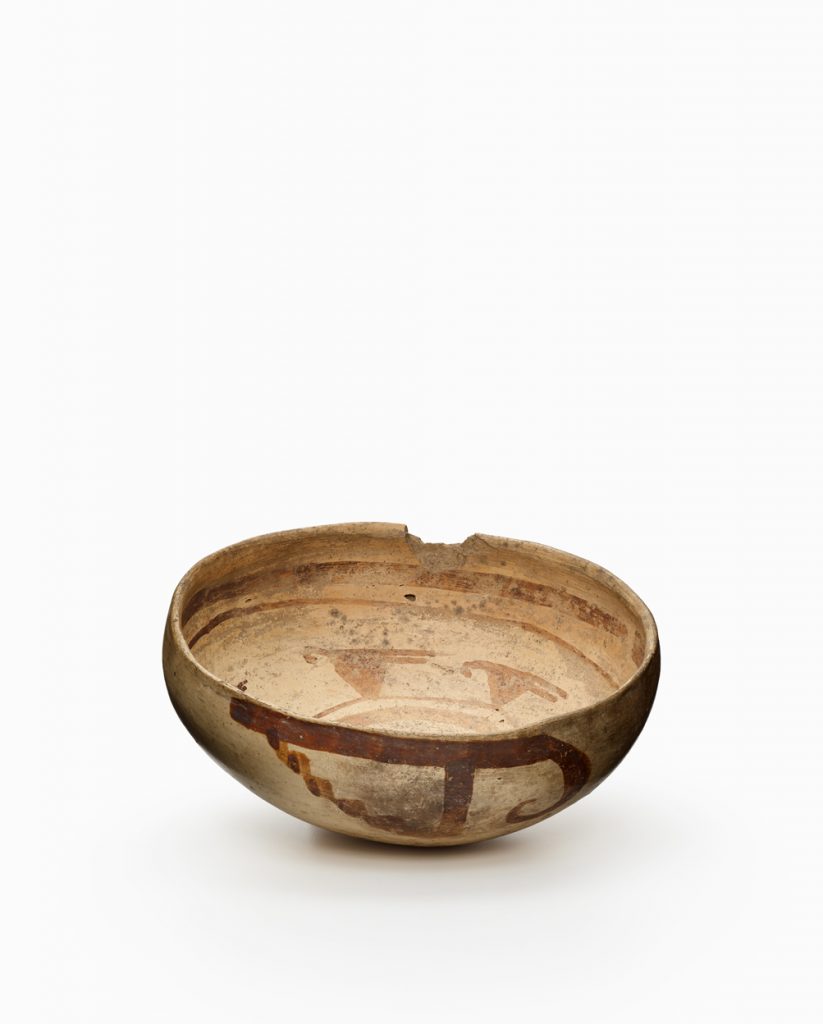Ramson Lomatewama
Curator Ramson Lomatewama (Hopi) has a background in education and is primarily a glassblower and a consultant for a variety of educational institutions.
Ramson chose the following for the Grounded in Clay exhibit:
Sharing Infinite Experiences
How do people learn about their histories? Many rely on the written word. Others turn to oral traditions and stories. Both have a certain value, but there are times when one needs to connect with one’s past in a very personal way. Some may call it a “primal” or “subconscious” connection, but there is another way that I find that connection; it is a connection, a relationship, that comes from experiential intimacy.
I was immediately drawn to the bird images on this bowl. I was born into the Eagle Clan, and that, in and of itself, compelled me to connect with this piece. So, for me, it was not necessarily about the bird imagery; someone else might see macaws or another bird species. Rather, it was about the intimate relationship taking root between me and the person who gathered the clay, prepared it, and shaped it. I felt a connection between us: two artists relating to our respective media, creating with purpose. They had intentions for what they were doing in their own time and space, just as I have intentions for what I do here and now when I create a glass piece.
I contemplated the wavering bands inside the bowl. I imagined watching the hands guiding the brushes that brought life to the painted birds. I was connecting with someone I did not know. That is the beauty of experiential intimacy; it transcends the personal. It is not limited to our understanding of time and space.
I am also drawn to the simple shape and designs. As a Native American glass artist, I try to tell a story through the simplicity of my creations. I believe this artist was doing the same. But what is the story? That, we can only imagine. What I can do is to respect and admire the life this person must have lived.
The conveniences that we take for granted today were absent back then. This creation, modest as it is, speaks of a life that was raw and dangerous. And at the same time, it projects the beauty and honesty of a world and a life that we can only imagine through our own personal histories.

